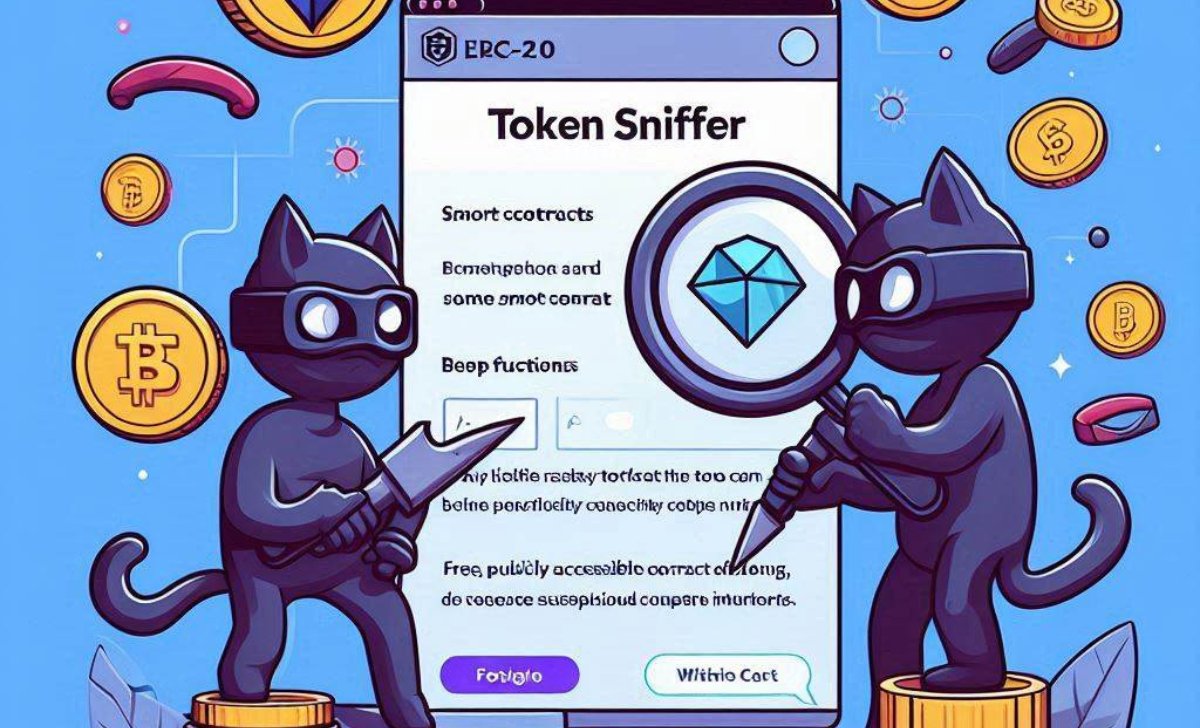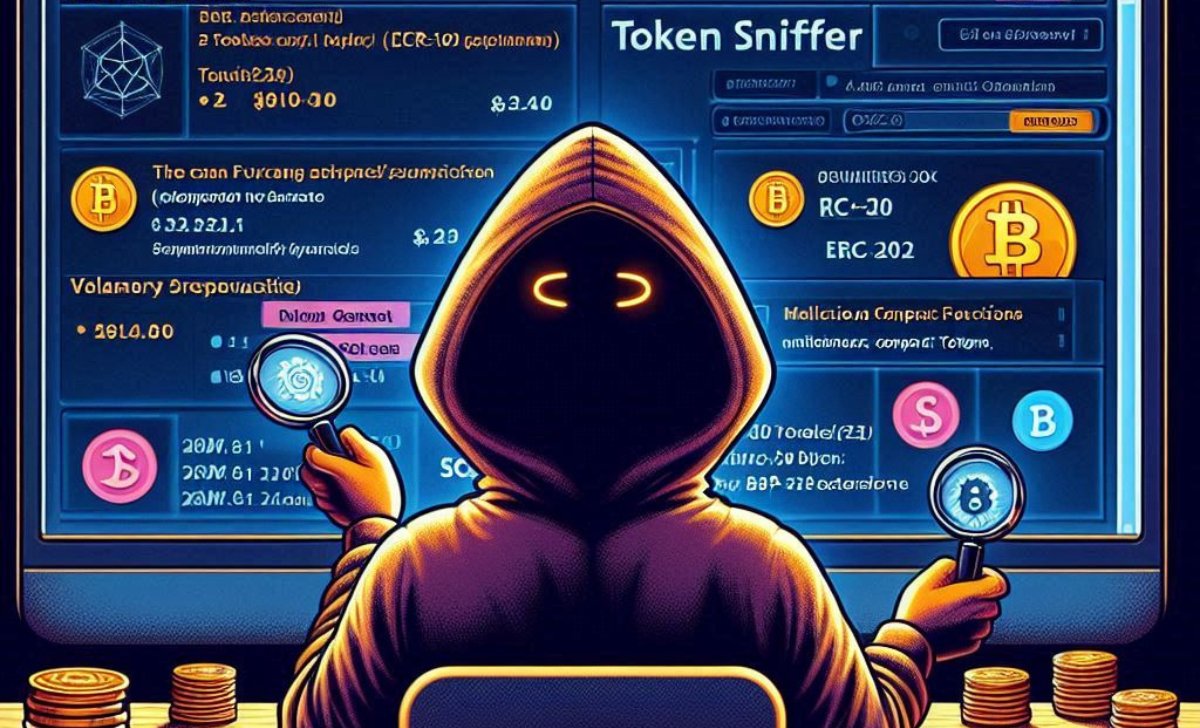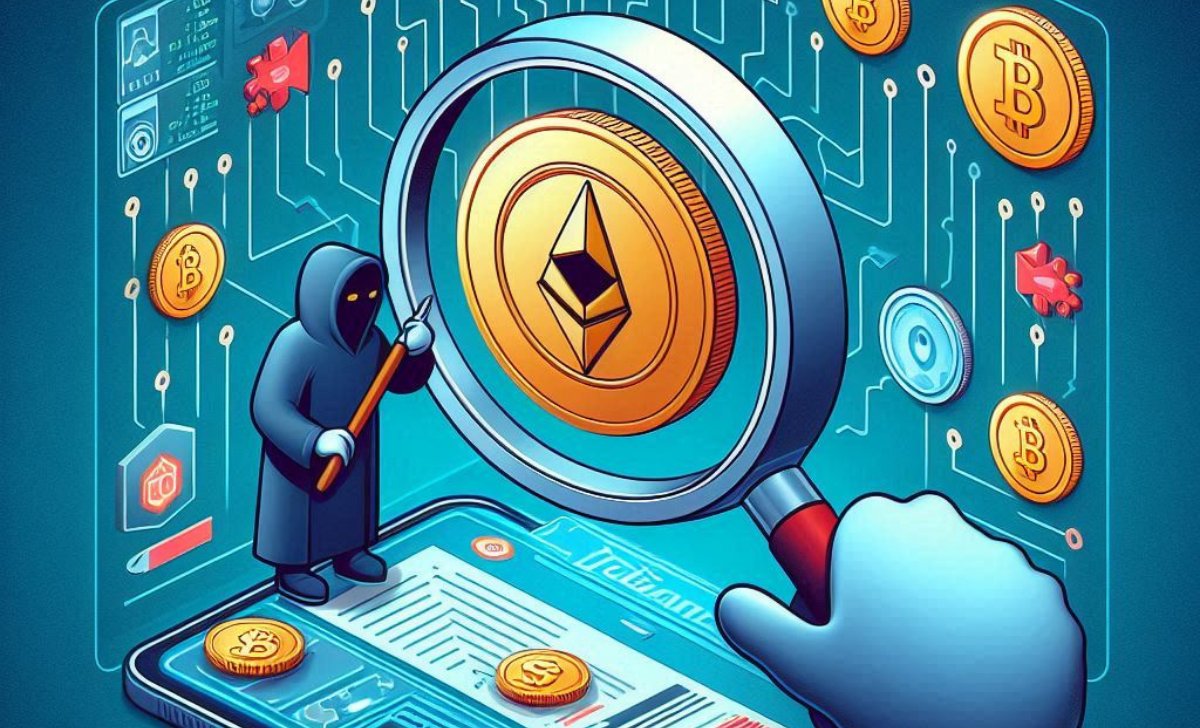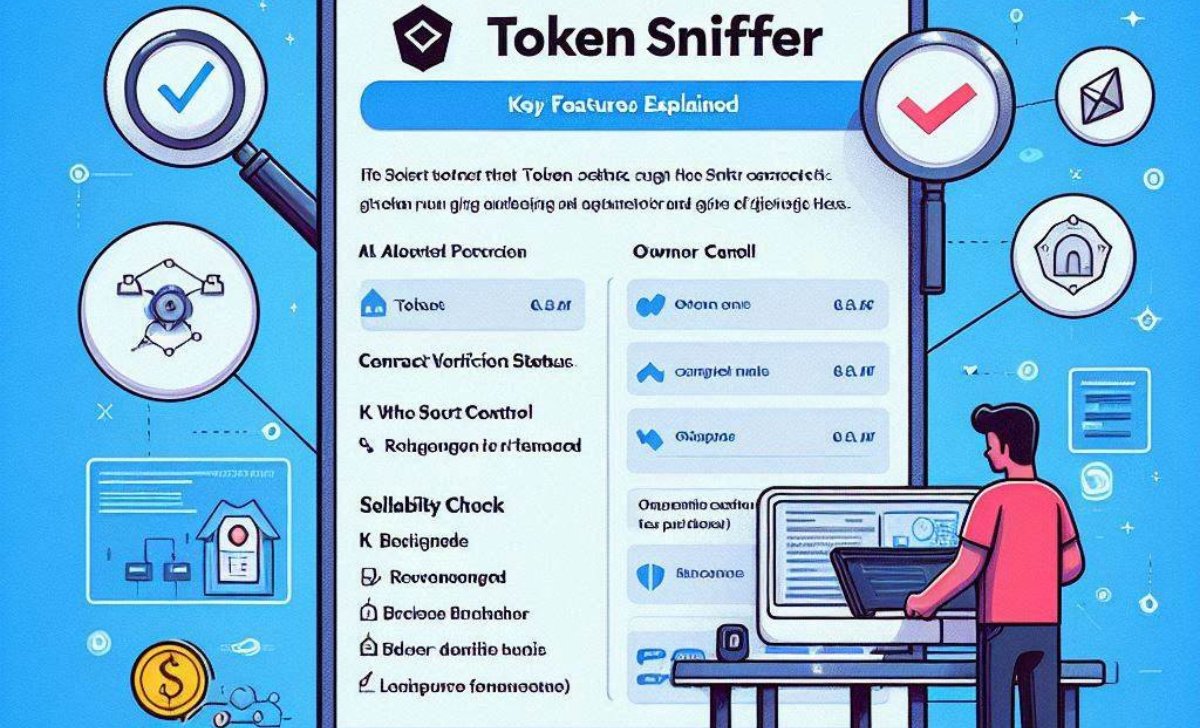Token Sniffer is a popular tool among crypto investors for detecting scam tokens and suspicious smart contracts before they cause financial damage. It plays a vital role in safeguarding DeFi users, but understanding how it works and where its strengths and limitations lie—is essential for using it effectively.
It will be explored in this article of TopCoin9 through key aspects including how it works, its advantages and weaknesses, comparisons with other scam detection tools, and expert tips on maximizing its use.
What Is Token Sniffer?

Token Sniffer is a free, publicly accessible web tool that analyzes the smart contracts of ERC-20 tokens (and some BEP-20 tokens) to detect suspicious activity or vulnerabilities. Its primary goal is to identify risky tokens, scams, or malicious contract functions that can trap investors.
Launched in 2021 by anonymous developers, Token Sniffer gained popularity during the rise of memecoins and speculative DeFi projects. It operates by scanning a token’s source code and comparing it against a database of known scams and malicious behaviors. Tokens are then given a Sniff Score ranging from 0 to 100, indicating their safety level.
According to an article by Decrypt.co (2022), the tool has been cited by several independent blockchain auditors for its efficiency in screening low-trust tokens before investment.
Did you know? A 2022 report from Chainalysis revealed that rug pulls accounted for over $2.8 billion in crypto losses in that year alone. Tools like Token Sniffer aim to reduce this number dramatically.
Now that we understand its core function, let’s explore why Token Sniffer has become a go-to resource for safety in DeFi through the content below!
Why Token Sniffer Is Crucial in the Crypto Ecosystem
The volatile and largely unregulated nature of crypto makes it a fertile ground for scams. Token Sniffer acts as an initial defense layer, empowering investors to make informed decisions before buying into a token—especially when identifying the best crypto to buy now.
The platform focuses on uncovering several common threats:
- Honeypot contracts (tokens you can buy but not sell)
- Unverified code
- Minting functions that allow infinite token creation
- Excessive owner control
- Liquidity manipulation
In addition, Token Sniffer cross-references tokens against a blacklist of known scam addresses. It helps users avoid “copy-paste” scams — malicious contracts cloned from previously flagged tokens.
According to the MIT Technology Review (2023), “scam detectors such as Token Sniffer have become essential for minimizing retail investor losses in the DeFi space.” This highlights its increasing role in promoting transparency and trust.
With the rising frequency of scam tokens, the need for robust detection mechanisms is clearer than ever. Let’s now take a look at how coin Token Sniffer works behind the scenes through the next section!
How Token Sniffer Works: Key Features Explained

Token Sniffer operates by analyzing the smart contract of a given token using a set of automated checks. Once a user enters a token address, the tool returns a comprehensive report featuring:
- Contract Verification Status: If the source code isn’t verified, it’s flagged.
- Owner Control Metrics: Examines who controls the token contract and whether it’s renounced.
- Sellability Check: Detects whether the token can be sold after buying (honeypot detection).
- Liquidity Analysis: Assesses if the liquidity is locked or can be removed by the owner.
- Token Similarity Index: Compares code against known scam contracts.
One of the standout metrics is the Sniff Score, which is calculated based on these individual checks. A token with a score below 30 is generally considered high-risk.
In a whitepaper from Stanford Blockchain Review (2022), Token Sniffer was referenced as a practical example of algorithmic contract vetting used to support retail crypto safety initiatives.
Token Sniffer’s utility doesn’t stop at analysis — it also helps users interpret what they see. So how do you actually use it? Details will be revealed in the content below!
Using Token Sniffer to Spot Rug Pulls and Scams
Using Token Sniffer is refreshingly straightforward, even for those new to crypto:
- Copy the token’s contract address from platforms like Etherscan or CoinMarketCap.
- Paste it into TokenSniffer.com’s search bar.
- Wait for the scan results.
- Review the score and flags, look for red alerts like “Cannot Sell Token” or “Owner Can Mint New Tokens.”
Let’s consider a real-world example. In late 2023, a meme token called “SafePepeX” skyrocketed overnight but turned out to be a honeypot. Token Sniffer had already flagged it with a Sniff Score of 10/100, citing inability to sell and centralized ownership. Those who checked the token in advance managed to avoid losses.
According to a report by Investopedia (2023), “tools like Token Sniffer are a must-use for short-term investors in meme-driven markets.”
While easy to use, like all tools, Token Sniffer has limitations. Let’s examine both the pros and cons of relying on it in the next part!
Token Sniffer: Strengths and Limitations

While Token Sniffer has become a staple for many retail investors looking to avoid scams, it’s essential to understand both its capabilities and its constraints.
Strengths
- Free and open-access tool
- User-friendly interface with minimal learning curve
- Quickly detects common contract scams
- Helps avoid honeypot traps and malicious code
- Acts as a great first step for DYOR (Do Your Own Research)
Limitations
- Not 100% foolproof—advanced obfuscation techniques may evade detection
- Doesn’t replace in-depth smart contract audits
- May not support every chain or token standard
- False positives can occur on newer or innovative contract designs
As noted by CoinDesk (2022), “while useful, Token Sniffer is best used in combination with other tools like RugDoc or DEXTools for a comprehensive view of token safety.”
Having seen what the tool can and cannot do, let’s look at how it compares to other popular scam detection services in the next section!
Comparing Token Sniffer With Other Scam Detection Tools
While Token Sniffer is known for its simplicity and rapid analysis, it’s not the only tool in the space. Comparing it with other solutions like RugDoc, DEXTools, and GoPlus Security gives a broader view of token safety:
- Token Sniffer excels at flagging common contract red flags automatically, offering a fast, free scan that’s great for beginners.
- RugDoc, on the other hand, provides manual reviews and risk ratings by a team of experts—ideal for more cautious investors. According to CoinTelegraph (2022), RugDoc has “grown into one of the most trusted names for BSC and AVAX DeFi safety checks.”
- DEXTools focuses on trading data and chart metrics but includes some token scoring, making it better suited for evaluating liquidity behavior rather than contract code.
- GoPlus Security offers API-based threat detection and supports multiple chains, providing a more developer-focused approach. As noted by Hackernoon (2023), GoPlus aims to become “the Web3 security infrastructure” for dApps.
In summary, while Token Sniffer offers speed and accessibility, more robust protection often comes from combining it with other tools that dive deeper into contract behavior and project credibility.
So how do real users feel about Token Sniffer? Let’s look at community sentiment through the next content!
Community Feedback: Is Token Sniffer Reliable?

Feedback from platforms like Reddit and X (formerly Twitter) shows that Token Sniffer is widely respected among DeFi communities. Users frequently share scan results to warn others about dangerous tokens—similar to how tools like a Doge Tracker help monitor meme coin activity in real time.
In one Reddit thread from r/CryptoCurrency (Feb 2024), a user wrote:
“Token Sniffer saved me from aping into a scam token with fake locked liquidity. Always check the Sniff Score before buying.”
Crypto influencers like ZachXBT have also endorsed using scam detection tools, although they recommend combining them with deeper research.
While the platform earns praise, remember that it only flags what’s been programmed — it can’t account for bad actors evolving their tricks. So how can you stay vigilant? Let’s explore that in the next section!
Tips to Protect Yourself in the DeFi World
Even the best scanner can’t guarantee 100% safety. Here are some practical tips to stay ahead:
- Always check Sniff Scores and contract verification.
- Look for locked liquidity and renounced ownership.
- Avoid tokens with anonymous teams and no online presence.
- Join the project Telegram/Discord groups to gauge community health.
- Never invest based on hype alone—take 5 minutes to DYOR using Token Sniffer and other tools.
Source: Harvard Business Review (2022) – “Investors who implement multi-layered research strategies are less likely to fall victim to rug pulls and Ponzi schemes.”
Conclusion
Token Sniffer remains a valuable first line of defense against crypto scams, helping users spot risks before they invest. We hope this guide has helped you better understand how to use it effectively and responsibly. Don’t forget to follow our blog for the latest insights and tools to stay safe in the ever-evolving world of DeFi.

Emily Thompson is a highly skilled crypto writer and strategist with extensive experience in blockchain journalism, having contributed to Cointelegraph and Binance Academy. At TopCoin9, she ensures high-quality, SEO-optimized content that educates and informs the crypto community.
Email: [email protected]












